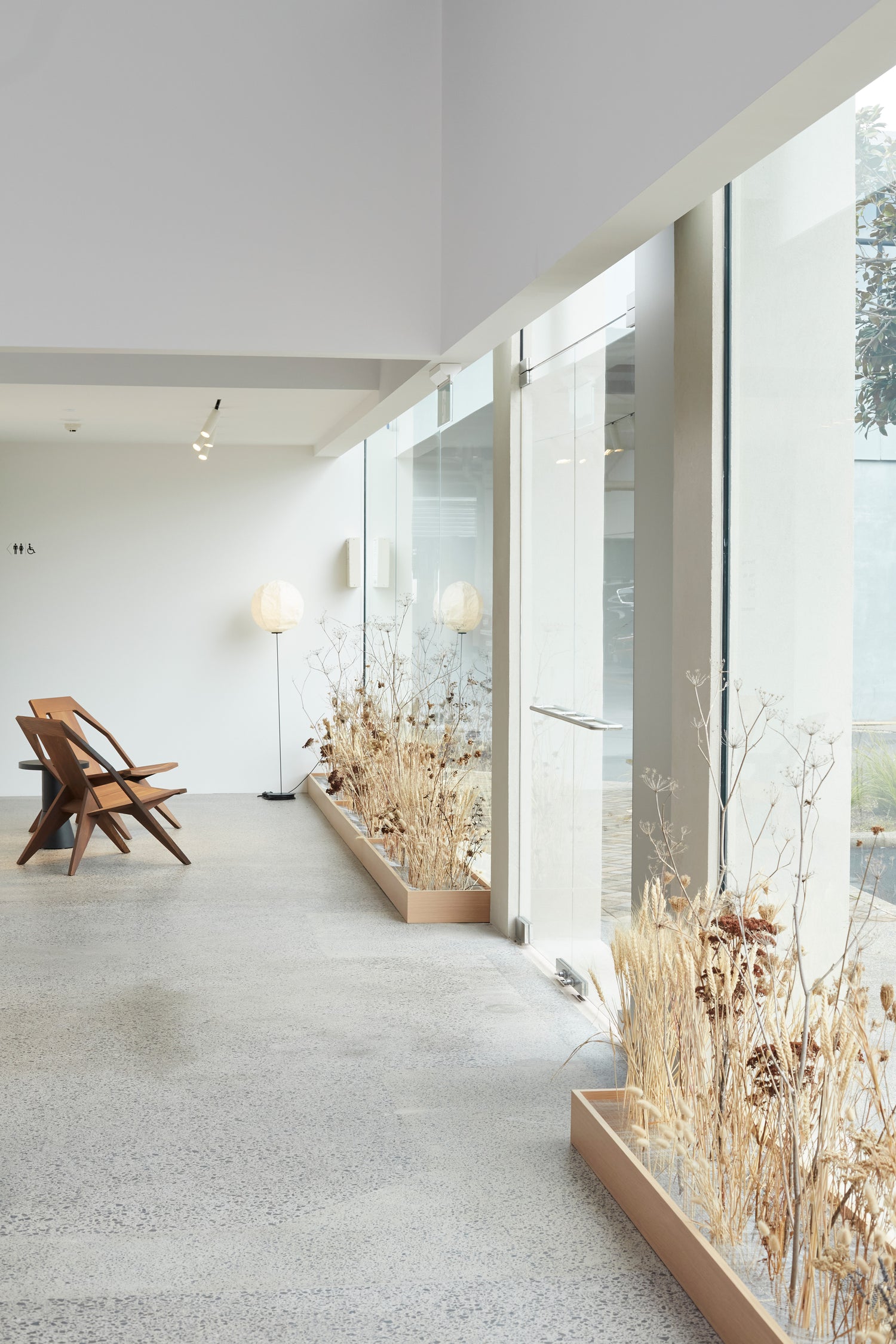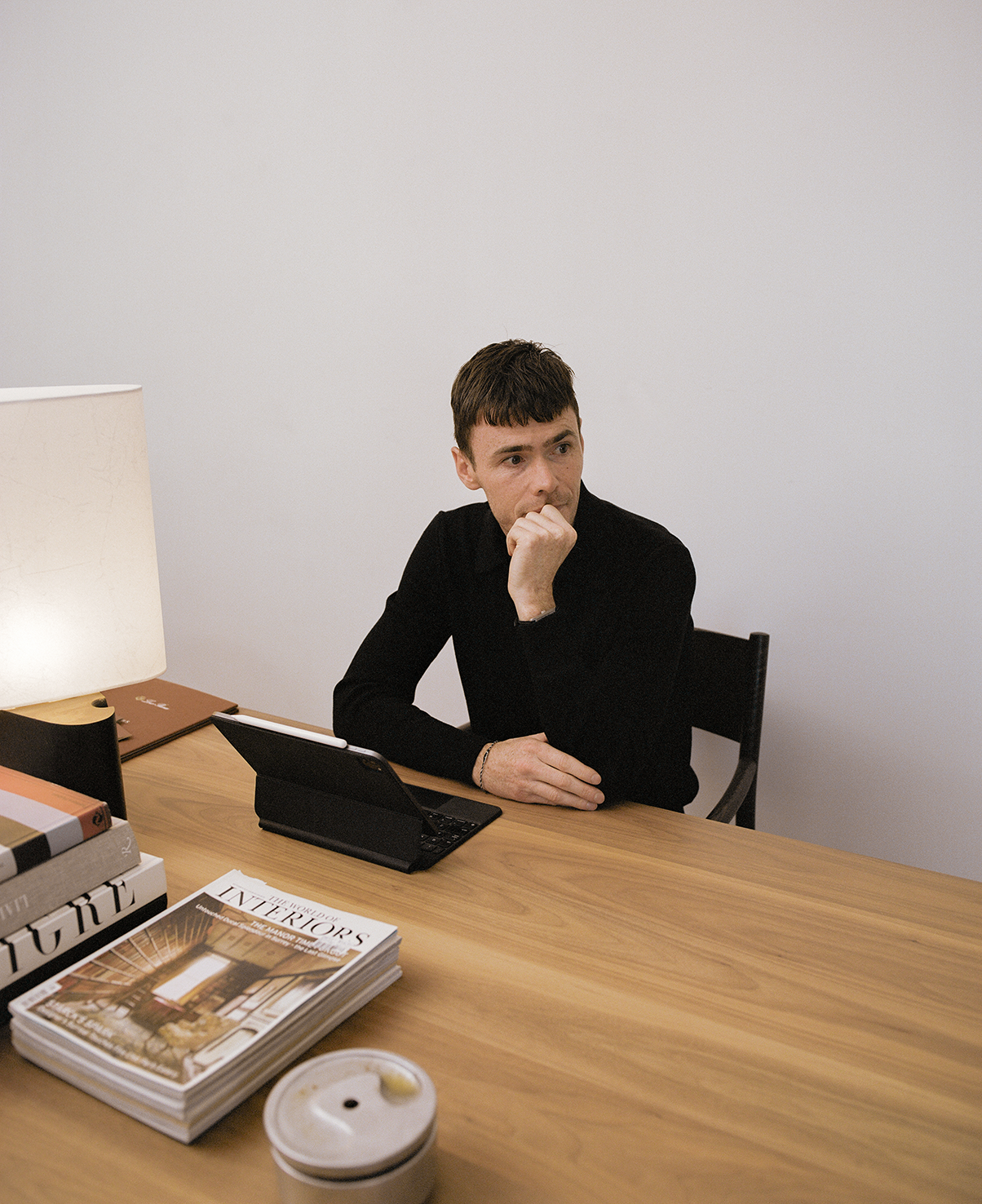With limited space for a garden at our new showroom, we approached landscape designer Jared Lockhart to bring an organic element into the Simon James space.
Working with earthy colour tones and the textural qualities of dried materials such as carrot, yarrow, sedum and wheat along with hand foraged umbellifers and other weeds, the meadow is both unexpected and complementary and offers a touch of wild escapism to the space.

Tell us about how this project came about?
Simon James approached us to create a garden for their beautiful new flagship store designed by Keshaw McArthur. The brief was to incorporate plants and an organic element, with limited physical space for a garden.
What inspired the meadow concept?
We loved Winston Dewhirst’s installation in collaboration with Steve Carr at Micheal Lett (Steve Carr, Making Time, Micheal Lett 2022) where Winston combined foraged foliage with dead plants alongside Steve’s cast bronze tyres. We were interested in this fresh take on a ‘show garden’ which is an installation - such as those at Chelsea Flower Show - that is highly manufactured but often made to look like a real garden. Show gardens require a high amount of upkeep and a lot of wasted material when they are dismantled. The idea of a ‘dead garden’ has merits in terms of practicality, longevity, and sustainability – no watering required! The concept was also influenced by seasonal perennial gardens; famously Piet Oudolf leaves the dry, brown ‘winter skeletons’ of grasses and plants gone to seed, rather than cutting back the spent perennial plants in autumn. The once soft and lush colourful forms are replaced by architectural seedheads and deep, dusky browns which give the garden a darker, more sombre mood, before they are cut to the ground in time for new growth in spring.

Tell us about the process of developing and installing the meadow.
The meadow is a combination of field grown dried materials such as carrot, yarrow, sedum and wheat with hand foraged umbellifers and other weeds, commonly found along Auckland’s motorways, suburbs and industrial zones. We built a prototype box, experimenting with an inner wire mesh structure that allowed the plant material to hold its shape while retaining the airiness of a real meadow. We collected the plant material over a few months as the season changed into late autumn and the wild fennel flowers went to seed, naturally drying themselves for us. Simon James had the beautiful timber window boxes built and we installed the meadow in situ.

What elements needed to be considered when working with the window space as a site? The meadow feels unexpected yet complementary in the space, how did you go about creating this balance?
It was important to us to consider the meadow as something that would viewed from all sides, which is a consideration in our work as a garden is never static and often has multiple viewpoints such as from within the house or from the street, etc. We were aware of not over planting the space to allow each piece space for its sculptural form to be appreciated and viewed in context with the furniture. We felt the earthy colour tones and the textural qualities of the dried meadow were a perfect complement to the luxurious materials and refined colour palette of Simon James’ offering, whilst also adding a touch of wild escapism to the space. The evocative scent of the wild fennel and lavender was an added bonus!
Who inspires you and your work
On a fundamental level we draw inspiration from a myriad of places, people and periods. We also just want to do excellent work for our clients, which constantly pushes us forward.


